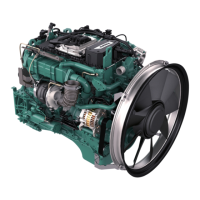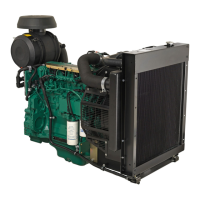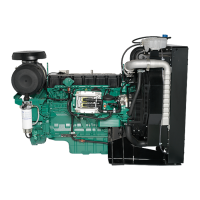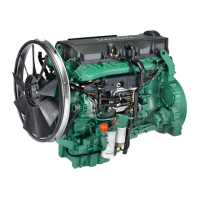EMS (Engine Management
System)
EMS (Engine Management System) is an electronic system with CAN communication (Controller Area Network)
for
diesel engine control. The system has been developed by Volvo Penta and includes fuel control and diagnostic
function.
Diagnostic function
The purpose of the diagnostic function is to detect and
locate any malfunctions in the EMS system, to protect
the engine and to ensure operation in the event of
serious malfunction.
If a malfunction is detected, it is announced by
warning lamps, a flashing diagnostic lamp or in plain
language on the instrument panel, depending on the
equipment used. If a fault code is provided as a
flashing code or in plain language, it is used for
guidance in any fault tracing. Fault codes can also be
read by Volvo's Vodia tool at authorized Volvo Penta
workshops.
If there is a serious malfunction, the engine will be
shut down altogether, or the control unit will reduce
engine power (depending on the application). Once
again, a fault code is set for guidance in any fault
tracing.
Input signals
The control unit receives input signals about engine
operating conditions etc. from the following
components:
- Coolant temperature sensor
- Charge air pressure and charge air temperature
sensor
- Position sensor, camshaft
- Speed sensor, flywheel
- Coolant level sensor
- Oil pressure sensor
- Fuel pressure sensor
- Water-in-fuel indicator
- Common rail fuel pressure
- Ambient temperature
- External stop input
- Throttle position sensor
- NOx sensor
Fuel control
The engine fuel requirement is analyzed up to 100
times per second. The amount of fuel injected into the
engine and the injection advance are fully
electronically controlled via fuel valves in the unit
injectors.
This means that the engine always receives the
correct volume of fuel in all operating conditions,
which provides lower fuel consumption, minimal
exhaust emissions, etc.
Output signals
The control module uses input signals to control the
following components:
- Unit injectors
- Start motor
- Main relay
- Pre-heat relay
- MPROP, high pressure fuel pump
- Temperature sensor, AdBlue/DEF solution
- Throttle actuator
- NOx sensor
Information from the sensors provides exact
information about current operational conditions and
allows the processor in the control unit to calculate the
correct fuel injection volume and timing, check engine
status, etc.
Presentation
22
47711097 09-2018 © AB VOLVO PENTA
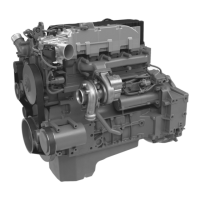
